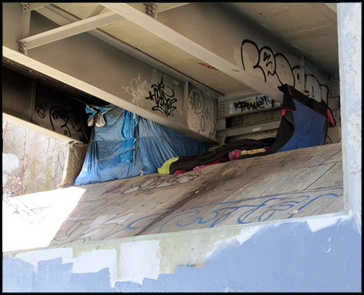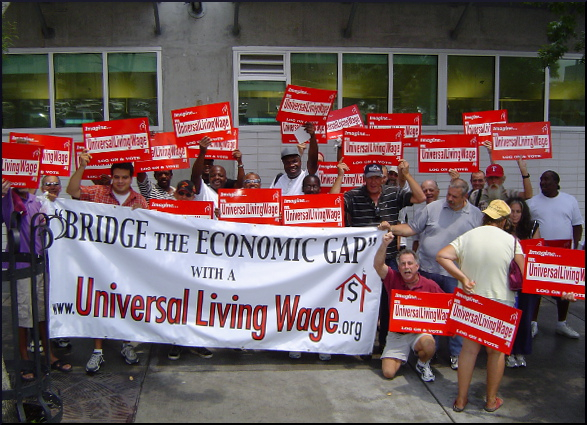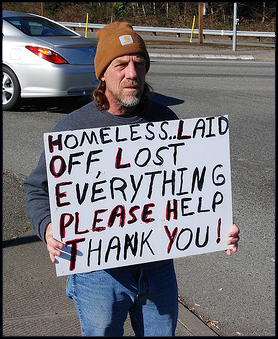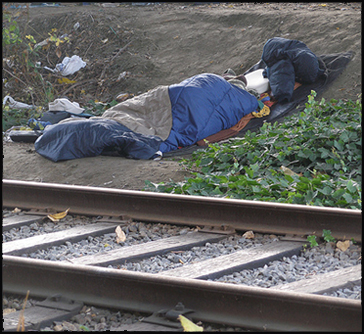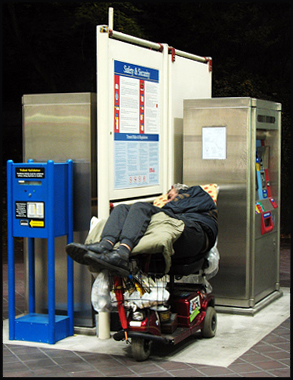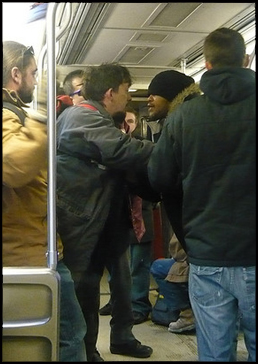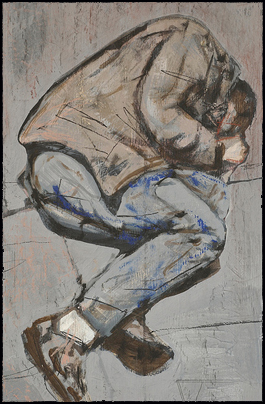
Here’s an interesting fact of modern life. If you set up a Google Alert for the words “assault + homeless,” you can amass quite a collection of incidents in a very short time. Let’s review the recent past :
November 7, 2010: In Youngstown, Ohio, John W. Goodwin interviewed a witness to the beating of a homeless man by a bunch of preteen and early teen boys, two days before. This young mother came outside to watch for her son to get off the school bus, and witnessed the apparently reasonless attack on a man who hung around the neighborhood and sometime slept in an empty house where his mother used to live.
November 24, 2010: In New Hampshire, Maddie Hanna reported on how a formerly homeless man was sentenced for his part (with two others) in assaulting a homeless teenager and throwing him in the river to die, last year. The other two attackers were also residents of an impromptu camp, and they say it was just revenge, because the teenager had stolen a pair of boots from yet another homeless man.
This is an example of the kind of news that causes some people to say, “Fine, as long as the bums stick to killing each other, the more, the merrier.” It is also an example of what society doesn’t need. Society needs people under roofs and within walls, and for them to be able to afford to stay there because they have a Universal Living Wage for being productive citizens.
December 1, 2010: From Eloy, Arizona, Lindsey Collom reported on how a 71-year-old man living in his car was attacked and severely beaten by as many as eight men.
December 7, 2010: Dana Treen and David Hunt reported on the stabbing of a 28-year-old homeless man, Jason Jerome, by a “dapper” 17-year-old boy acting out who knows what kind of sick fantasy. The kid was wearing a suit and tie, for heaven’s sake. We know this because he was videotaped by the security camera of a nearby business, which it appears the victim was savvy enough to lead his attacker within range of, before things got serious.
Jerome ended up with knife wounds in the neck, chest, stomach, hip, and hand, with a finger nearly severed. The sheriff wasn’t sure whether the stabbing was a hate crime, because it might have resulted from some kind of dispute. Treen and Hunt say,
At Shands Jacksonville where he was refusing surgery, Jerome told police he was asleep and woke to someone standing over him with a knife. He said he didn’t know the attacker who he described only as having long hair and glasses.
December 15, 2010: In Australia, like many other places, there is a public perception that people experiencing homelessness somehow “ask for” any violence that comes their way. They deserve to get beaten up or set on fire, and it’s their own fault for having such a risky lifestyle. Several institutions got together on a project to try and do something about the widespread misunderstanding of the voluntary nature of homelessness, among other things.
Dr. Catherine Robinson of Sydney’s University of Technology has completed a report titled “Rough Living: Surviving Violence and Homelessness.” The sections on “Violence during Homelessness” and “Violence in Institutional Care” have some harrowing stories. The dispatch says,
New research into trauma and homelessness uses ‘biographies of violence’ to understand how homeless people manage and survive repeated episodes of violence throughout their lives.
In-depth interviews with a dozen people experiencing homelessness revealed histories of physical and sexual abuse in childhood, parents with multiple problems including housing instability, and parents practicing domestic violence on each other. The study included six men and six women. A PDF file of the entire 70-page report is available online.
There are plenty more examples to choose from, and violence against people experiencing homelessness is no new phenomenon. In Looking Up at the Bottom Line, Richard R. Troxell talks about a man who was shot for asking for a cigarette, and a man set on fire, and taser attacks, and all kinds of senseless savagery against people who don’t have a place to live. Here is one of Richard’s narratives:
I remember clearly how I felt that morning when I heard that two of our guys had been beaten with two-by-four boards… In the middle of the night, two college-age boys driving an old Chevy raced to a stop, jumped from the car, clutching two-by-fours. They then proceeded to whale on the guys. They broke one arm of each of two men who lay sleeping. One man suffered a fractured hand and a skull fracture. The other had three broken fingers. The assailants then jumped back into the car and were gone. The event really had no beginning, only an end. It was a senseless beating. No one knew why it had occurred. We only knew that if our guys had not been sleeping on the street it probably would not have happened.
Reactions?
Source: “Witness: Kids who assaulted homeless man are ‘menace,’” Vindy.com, 11/07/10
Source: “Man pleads to homeless beating,” ConcordMonitor.com, 11/24/10
Source: “Up to 8 sought in attack on homeless man, 71, in Eloy,” AZCentral.com, 12/01/10
Source: “Stabbing of homeless man in Jacksonville could be a hate crime,” Jacksonville.com, 12/07/10
Source: “Violence Faced by Australia’s Homeless,” ProBonoAustralia.com
Source: “Looking Up at the Bottom Line,” Amazon.com
Image by Vincent Bernier, used under its Creative Commons license.

